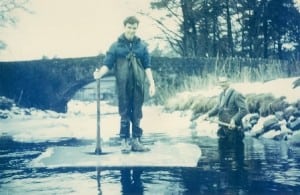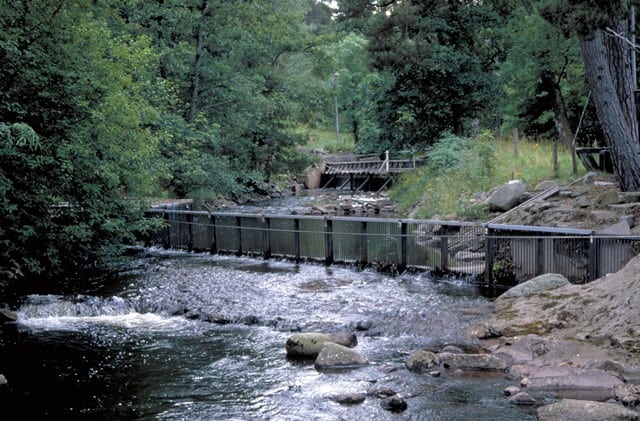Marine
Celebrating 50 years of the Girnock Burn Fish trap
March 21, 2016 by Marine Directorate Communications No Comments | Category Fisheries, Marine Directorate general, Marine Directorate Science
 2016 marks the 50th anniversary of the Girnock Burn fish trap on the River Dee in Aberdeenshire. The Girnock Burn fish trap is one of only three long-term fish population monitoring facilities in Scotland where detailed information on adult and emigrant numbers, sizes and ages of Atlantic salmon is obtained by Marine Scotland Science (MSS) (the others being the Baddoch Burn on the Dee and the River North Esk).
2016 marks the 50th anniversary of the Girnock Burn fish trap on the River Dee in Aberdeenshire. The Girnock Burn fish trap is one of only three long-term fish population monitoring facilities in Scotland where detailed information on adult and emigrant numbers, sizes and ages of Atlantic salmon is obtained by Marine Scotland Science (MSS) (the others being the Baddoch Burn on the Dee and the River North Esk).
During the early 1960s, a network of three fish traps was planned for the River Dee with the aim of studying Atlantic salmon populations in the lower, middle and upper reaches of the river, approximating to late, middle and early running stocks respectively. However, only the Girnock Burn traps were instigated at this time. The site comprises a pair of fixed traps built around the structure of an old weir that historically diverted water from the burn to power a local sawmill. Throughout the 1960s and 1970s, the trap was run by a four-man team who lived locally and ensured uninterrupted operation of the trap throughout the year. Reductions in trapping effort during the early 1980s resulted in staff being relocated to the Freshwater Fisheries Laboratory in Pitlochry, and the trap is now operated remotely from there. Several webcams on-site enable continuous monitoring of the conditions which allow the current complement of staff to concentrate site visits to periods where fish are likely to be caught in the traps (i.e. high flows).
The Girnock Burn is dominated by spring-run multi-sea-winter Atlantic salmon, the stock component that has been of greatest concern in recent decades, and the traps catch adult salmon returning to the stream to spawn and juvenile salmon emigrating seaward. The facility provides key data for guiding Government policy on regulating fisheries to conserve the Scottish spring stock. In addition to the number of fish passing through these traps, important information is also obtained on size, age and sex of the fish, and an annual electrofishing programme provides information on juvenile abundance and performance. Taken together these data make the Girnock a uniquely valuable research and monitoring facility representing the longest comprehensive dataset of Atlantic salmon populations. The Girnock has been the focus of > 100 peer-reviewed papers covering a broad range of topics including fisheries, hydrology, hydrochemistry, river temperature, invertebrate drift and productivity. The site acts as a focus for inter-disciplinary research supporting collaborations with the Universities of Aberdeen, Birmingham and Strathclyde. Data from the site also contributes towards national and international assessments of stock status through International Council for the Exploration of the Sea (ICES)
The length of the Girnock datasets represents both a fantastic asset and a data management challenge. The bulk of the Girnock data pre-dates the use of computers, with raw data collected in books, notepads, paper files and maps. These comprehensive records were never fully documented, archived, and quality controlled in a single location and format until 2012, when a two year programme of work carefully quality controlled, validated, and where necessary, entered data into the Marine Scotland FishObs database. This exercise has produced a series of definitive Girnock datasets for analysis which are readily available to download from the Marine Scotland website.
With the Girnock set to undergo a programme of trap maintenance over summer, there is every chance that the trap will operate for the coming 50-years and add to the already valuable long-term dataset underpinning advice on fish and fisheries to Scottish Government, supporting national and international salmon and eel population assessments, the development of assessment tools, and understanding of the effects of long-term climate change on fish populations.
Ross Glover
Fisheries Biologist / Girnock & Baddoch Trap Manager
Further Information



Leave a comment